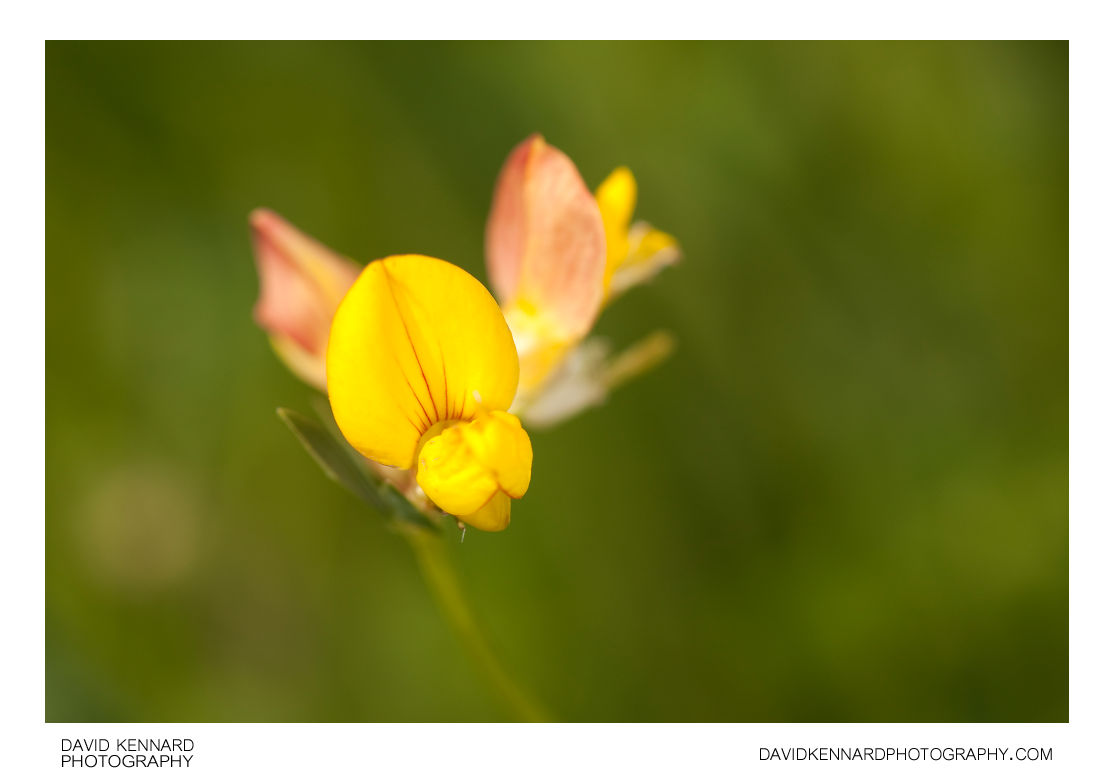Bird's-foot Trefoil (Lotus corniculatus) flowers

Description
- Title:
- Bird's-foot Trefoil (Lotus corniculatus) flowers
- Caption / Description:
-
Lotus corniculatus is a common flowering plant native to grassland temperate Eurasia and North Africa. The common name is Bird's-foot Trefoil (or similar, such as "birdsfoot trefoil"), though the common name is often also applied to other members of the genus. It is also known in cultivation in North America as Birdfoot Deervetch.
It is a perennial herbaceous plant, similar in appearance to some clovers. The flowers develop into small pea-like pods or legumes. The name 'bird's foot' refers to the appearance of the seed pods on their stalk. There are five leaflets, but with the central three held conspicuously above the others, hence the use of the name trefoil.
The height of the plant is variable, from 5-20 cm, occasionally more where supported by other plants; the stems can reach up to 50 cm long. It is typically sprawling at the height of the surrounding grassland. It can survive fairly close grazing, trampling and mowing. It is most often found in sandy soils. It Flowers from June until September.
The plant has had many common English names in Britain, which are now mostly out of use. These names were often connected with the yellow and orange colour of the flowers, e.g. 'eggs and bacon', 'butter and eggs'.
It is used in agriculture as a forage plant, grown for pasture, hay, and silage. Taller growing cultivars have been developed for this. It may be used as an alternative to alfalfa in poor soils. It has become an invasive species in some regions of North America and Australia.
A double flowered variety is grown as an ornamental plant. The plant is an important nectar source for many insects and is also used as a larval food plant by many species of Lepidoptera such as Six-spot Burnet. It is regularly included as a component of wildflower mixes in Europe. Fresh birdsfoot trefoil contains cyanogenic glycosides and is thus poisonous to humans.
The plant is one of the few flowers in the language of flowers that has a negative connotation, symbolizing revenge or retribution.
Description taken from Wikipedia: http://en.wikipedia.org/wiki/Lotus_corniculatus
- Tags / Keywords:
-
- Biota
- Life
- Vitae
- Eukaryota
- Green
- Plantae
- Plants
- Magnoliophyta
- Flowering Plants
- Angiosperms
- Magnoliopsida
- Dicotyledons
- Yellow
- Fabales
- Fabaceae
- Bean
- Lotus
- Lotus corniculatus
- Birdfoot deervetch
- Birdsfoot trefoil
Admin
- Date Original Photo Taken:
- Original File Name:
- _MG_2143.CR2
- Event:
- Rating:
- ☆☆
- Date this image added/last updated on website:
- Original File Dimensions:
- 4272px x 2848px
- File Type:
- JPEG
- Color Mode:
- RGB
- Original Image Color Profile:
- Adobe RGB (1998)
Location
- Location Created:
-
- Sublocation:
- City:
- Market Harborough
- Province/State:
- Leicestershire
- Country:
- United Kingdom
- World Region:
- Europe
- Geo-location:
Rights
- Copyright Status:
- Copyrighted
- Licensing Status:
- Rights Managed
- Available for Editorial Use:
- Yes
- Available for Commercial Use:
- Yes
- Copyright Notice:
- © 2009 Dave Kennard
Camera Data
- Date Digital Resource was created:
- Shutter speed:
- 1⁄200 s
- Aperture:
- f/5
- Camera Model:
- Canon EOS 450D
- ISO:
- 100
- Exposure Compensation:
- 0
- Focal Length:
- 100mm
- Focal Length (35mm equiv.):
- Metering Mode:
- Multi-segment
- Flash:
- On, Fired
- Exposure Mode:
- Manual
- White Balance:
- Manual
- Light Source:
- Exposure Program:
- Manual
Additional shooting metadata
- Lens:
- Canon EF 100mm F2.8 Macro USM
- Filters used:
- Additional Optics used:
- Setup:
- Handheld
Canon MT-24EX Macro Twin flash
Post Processing
- Image Modified:
- Software used:
- Post Processing:
